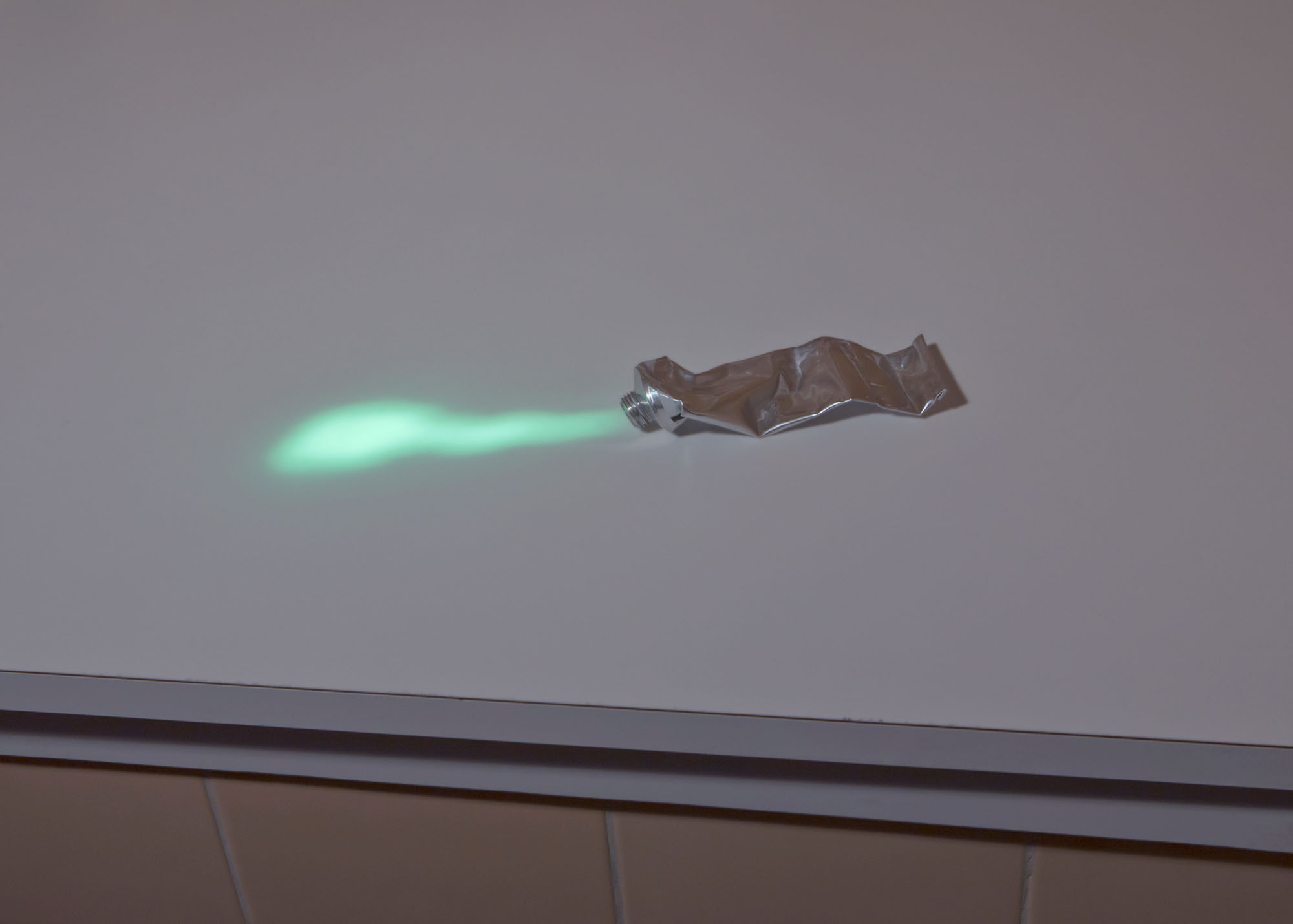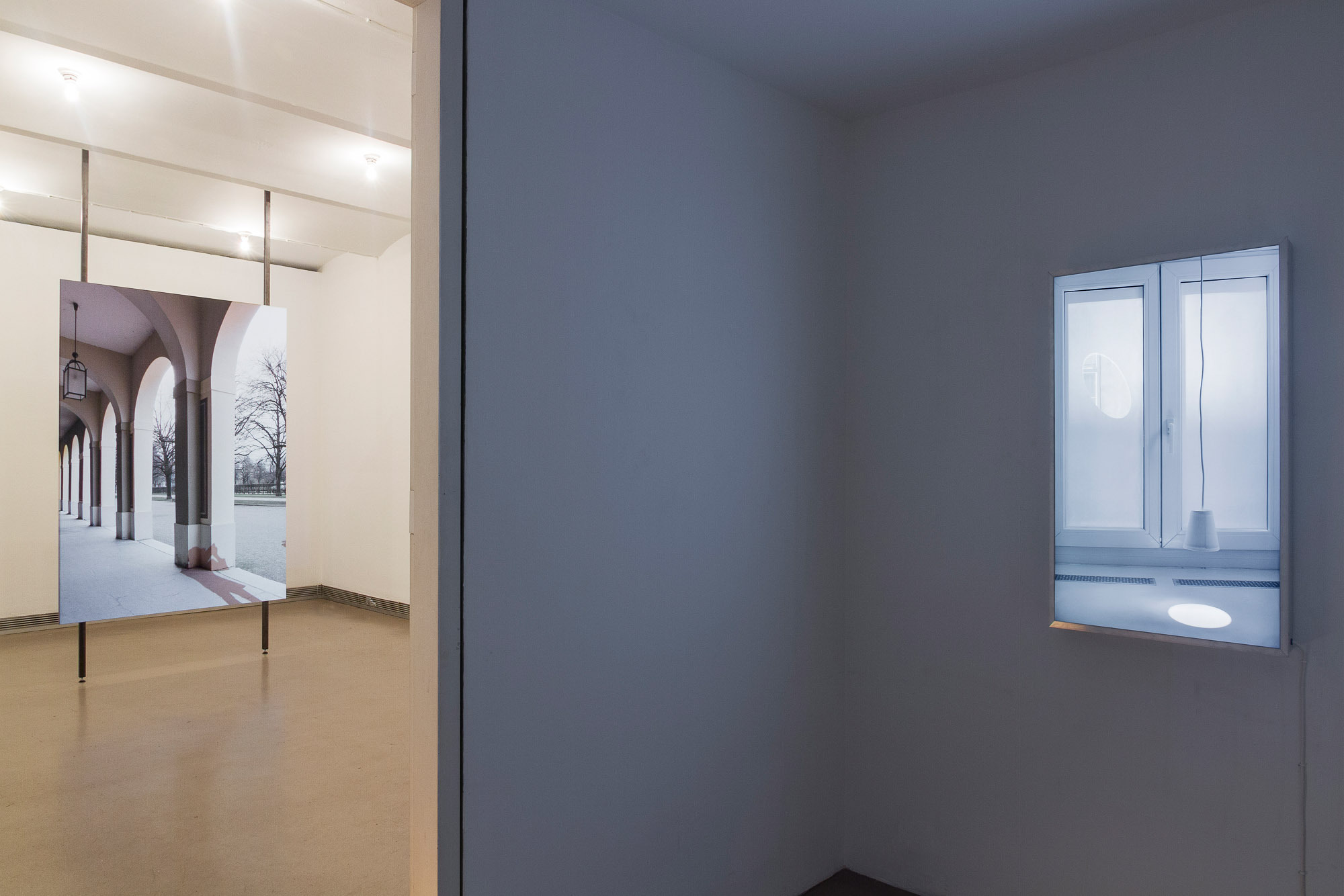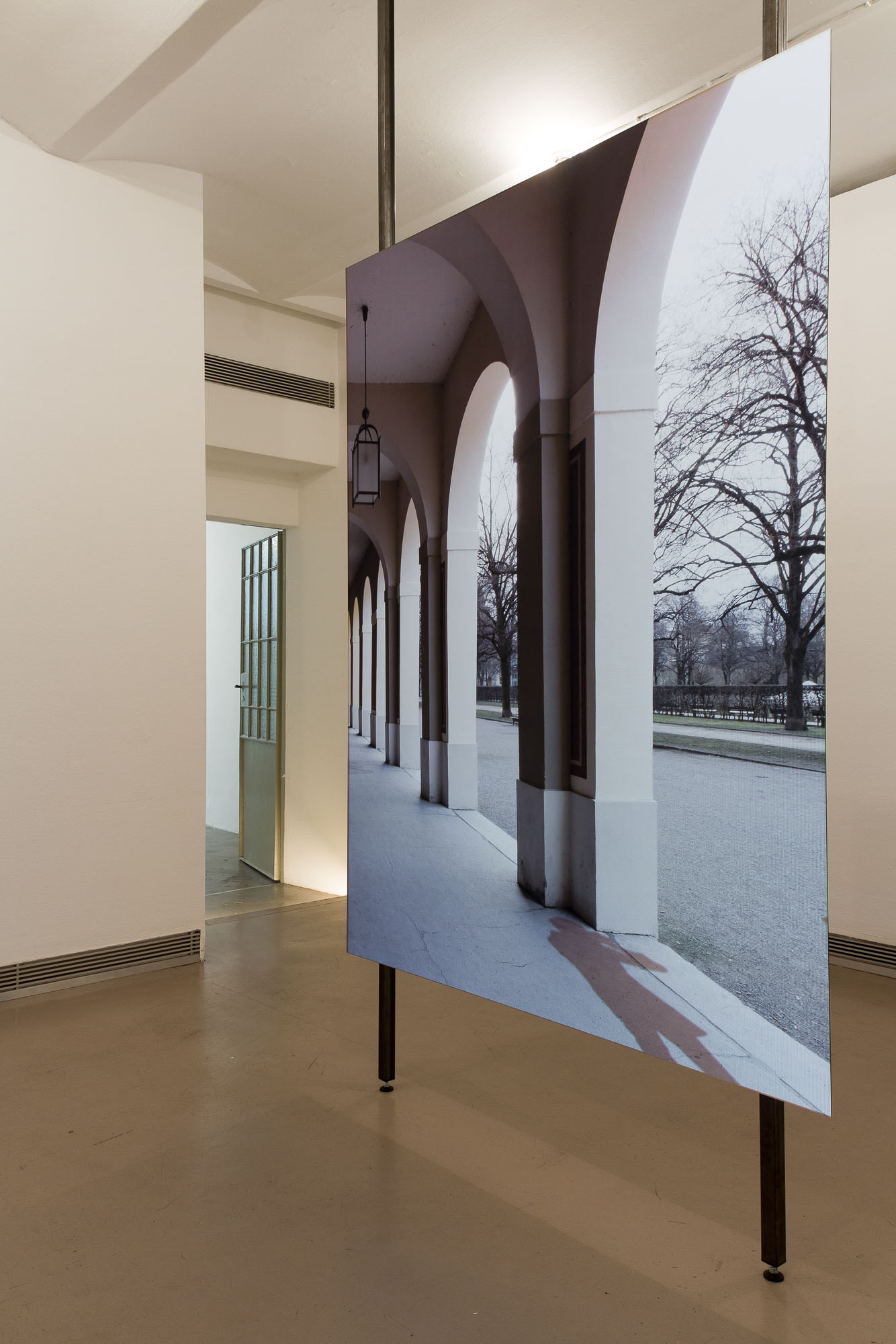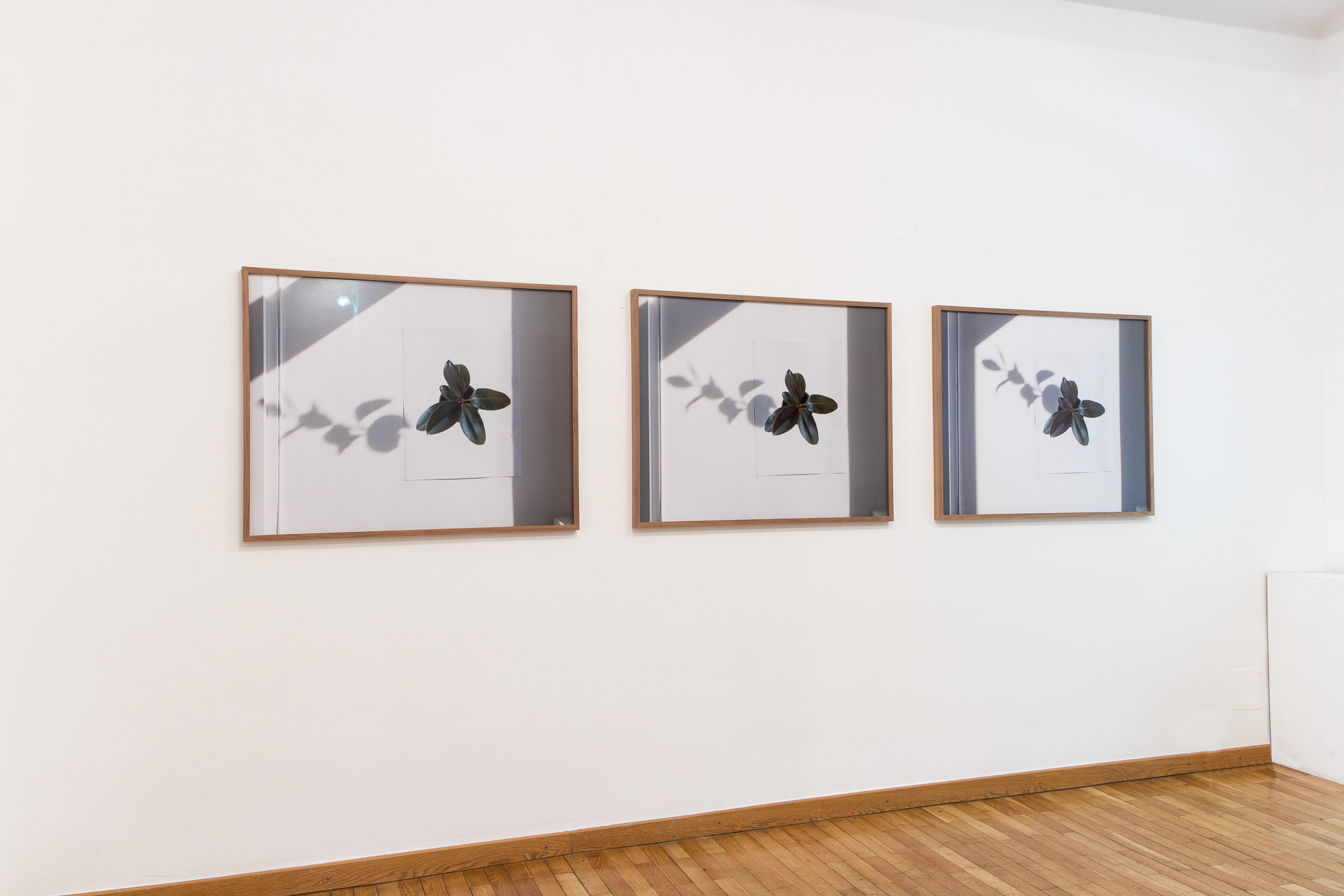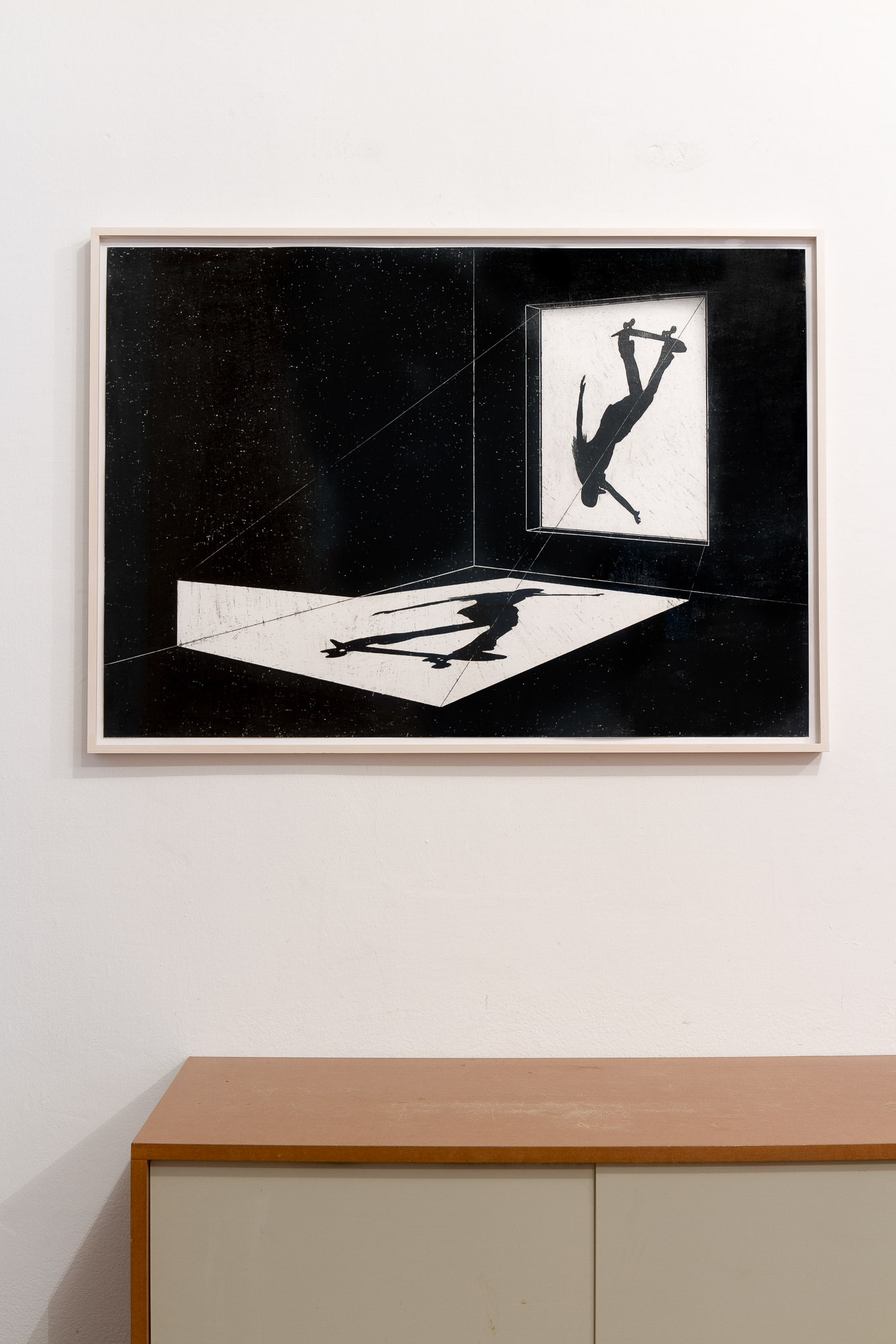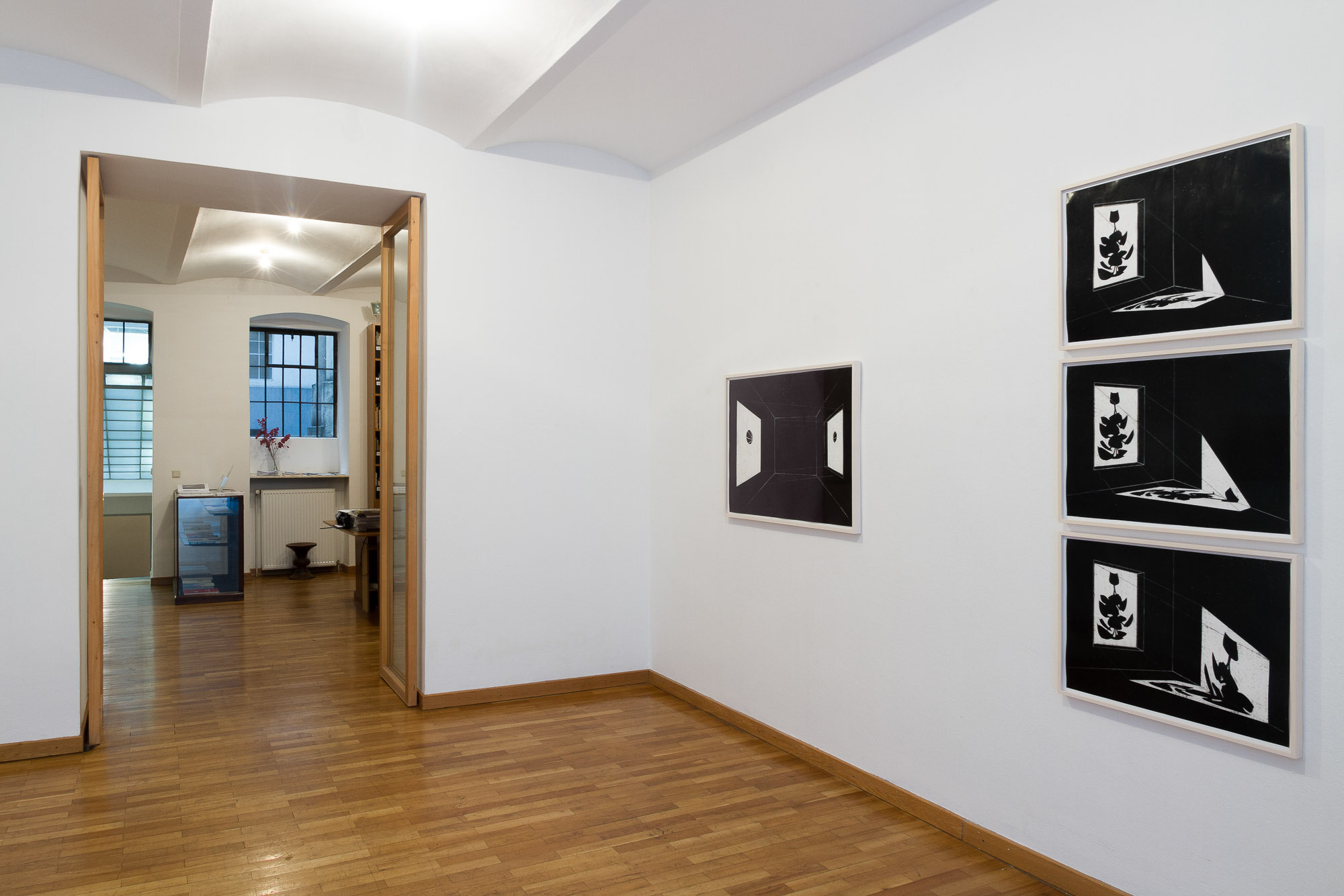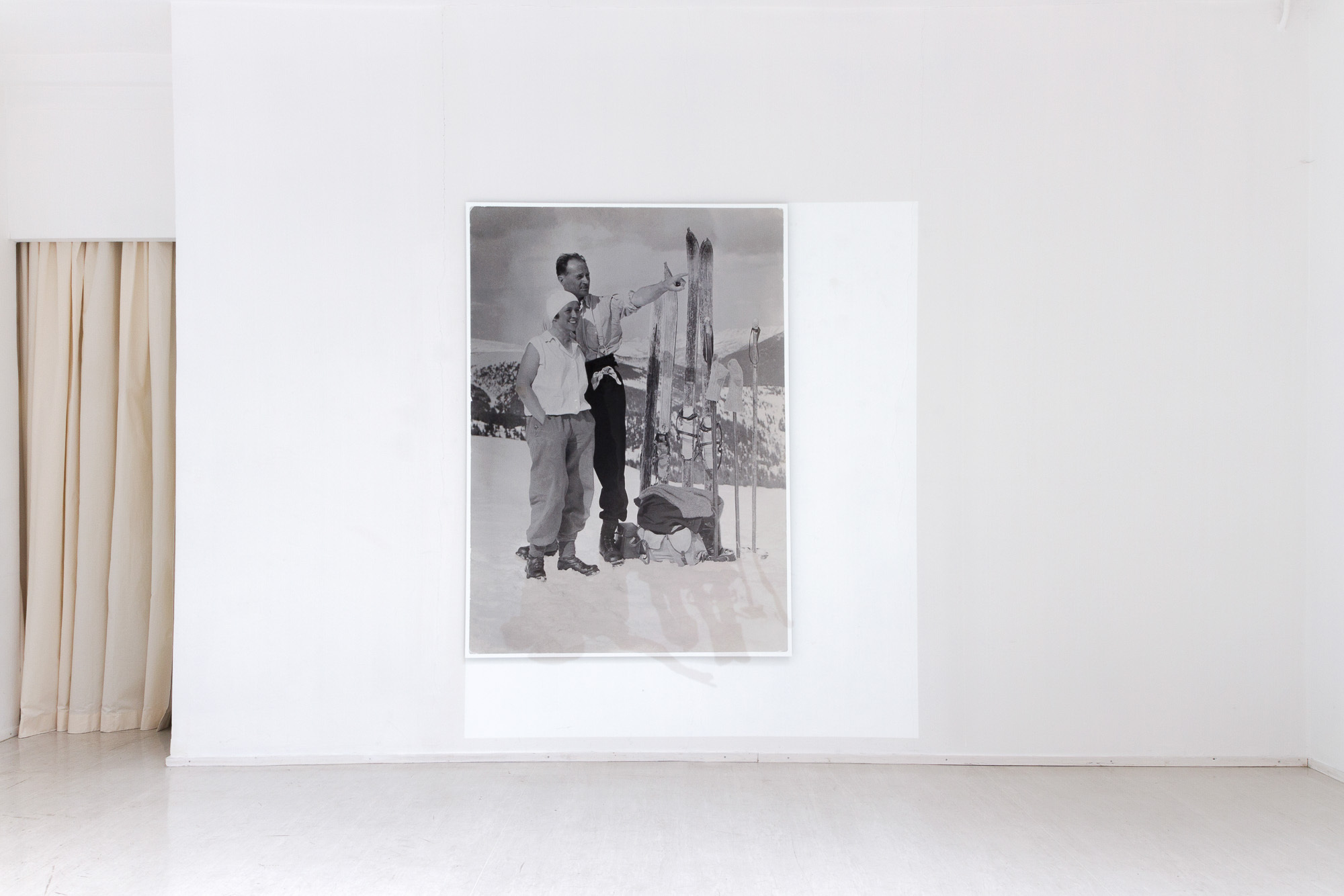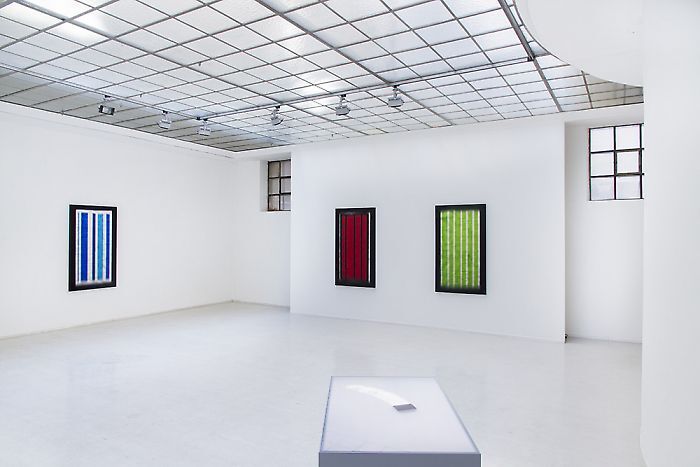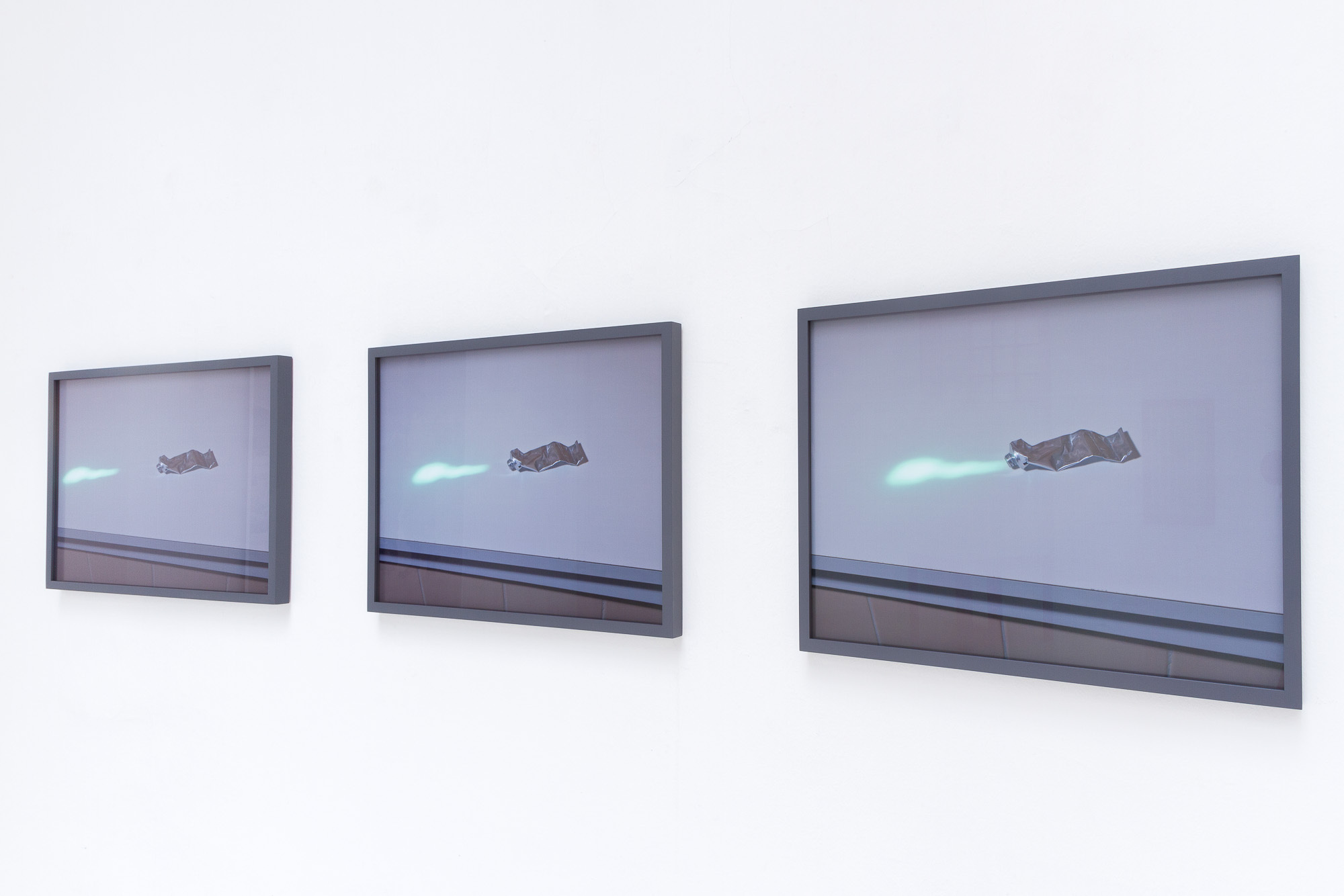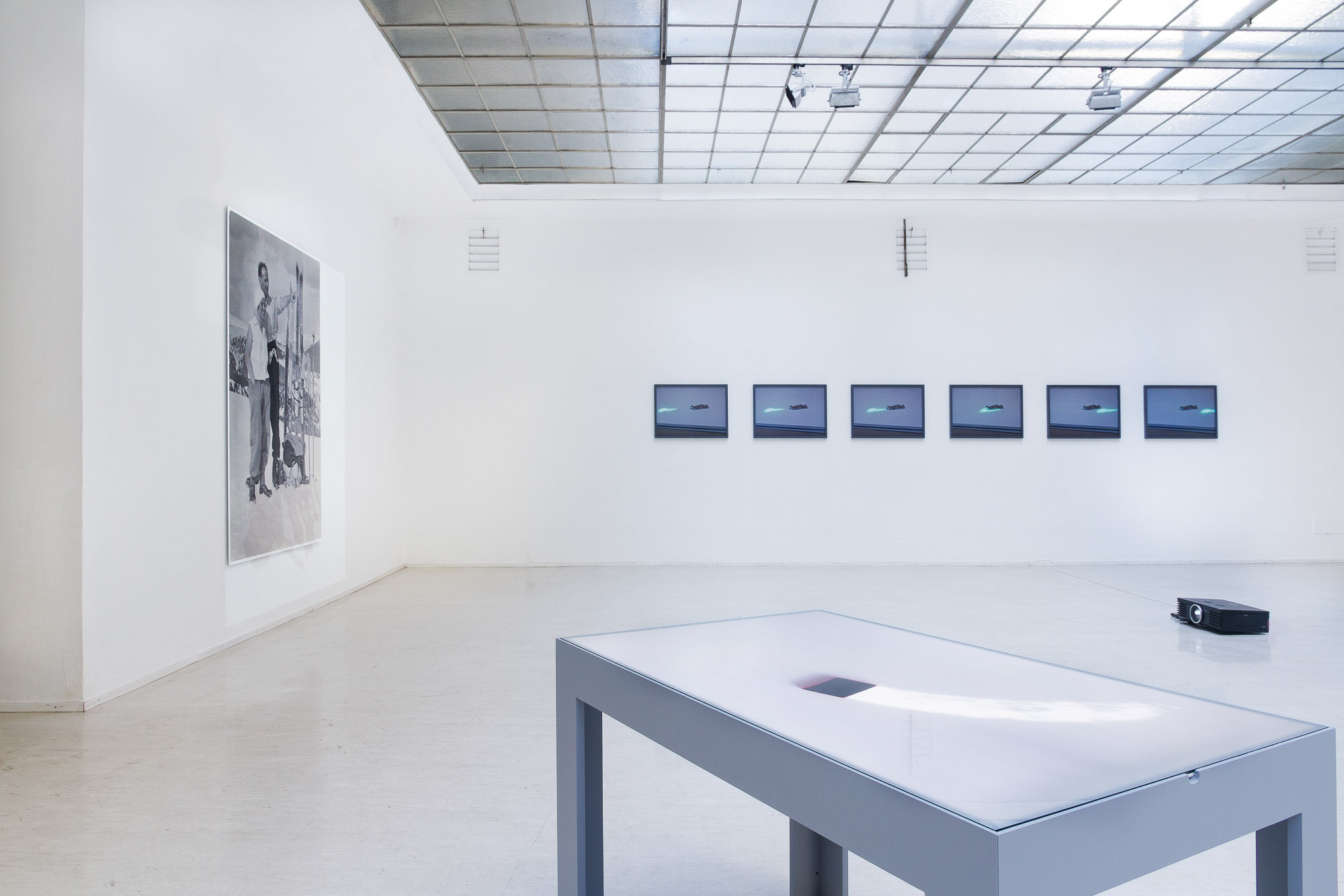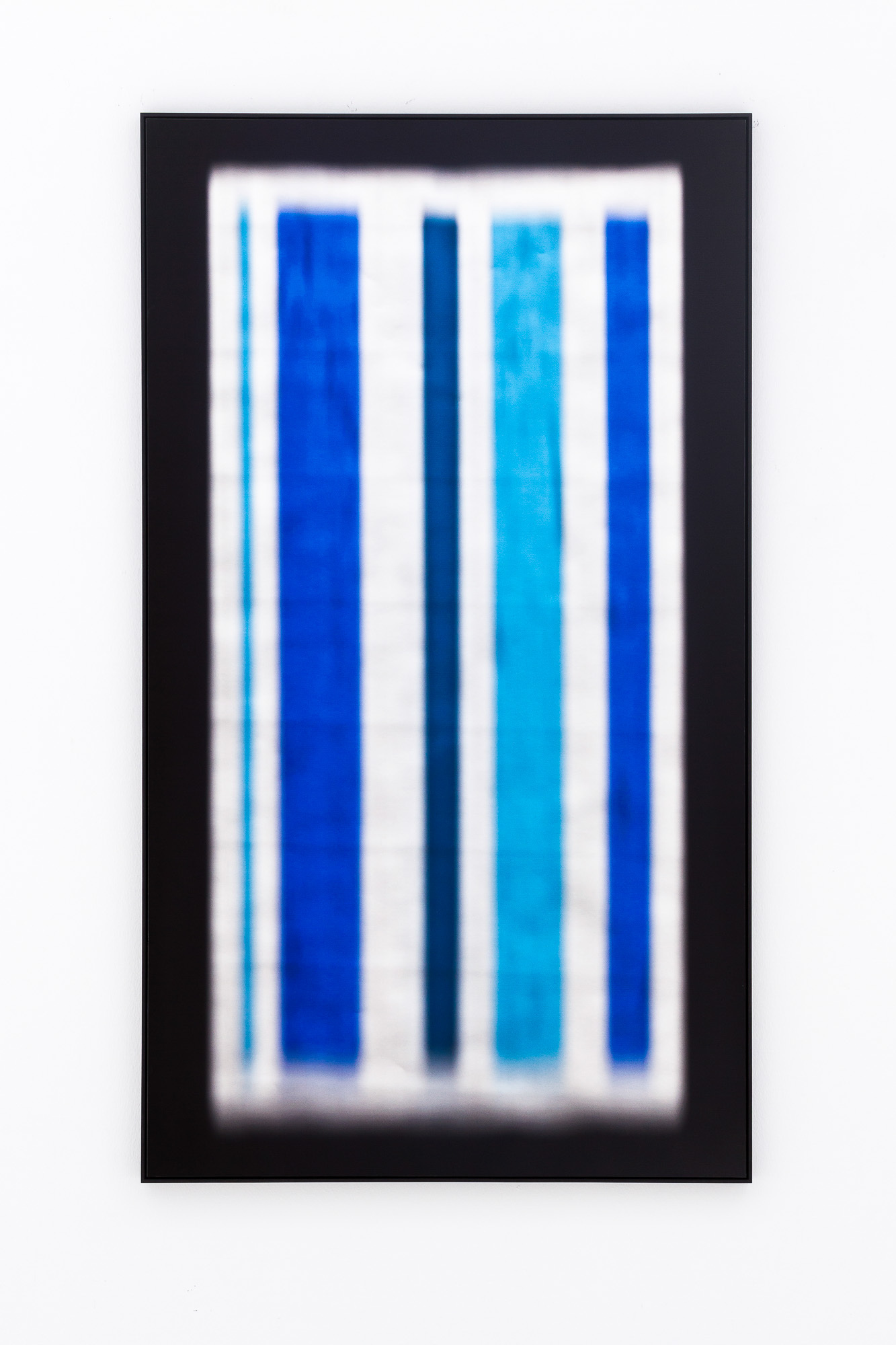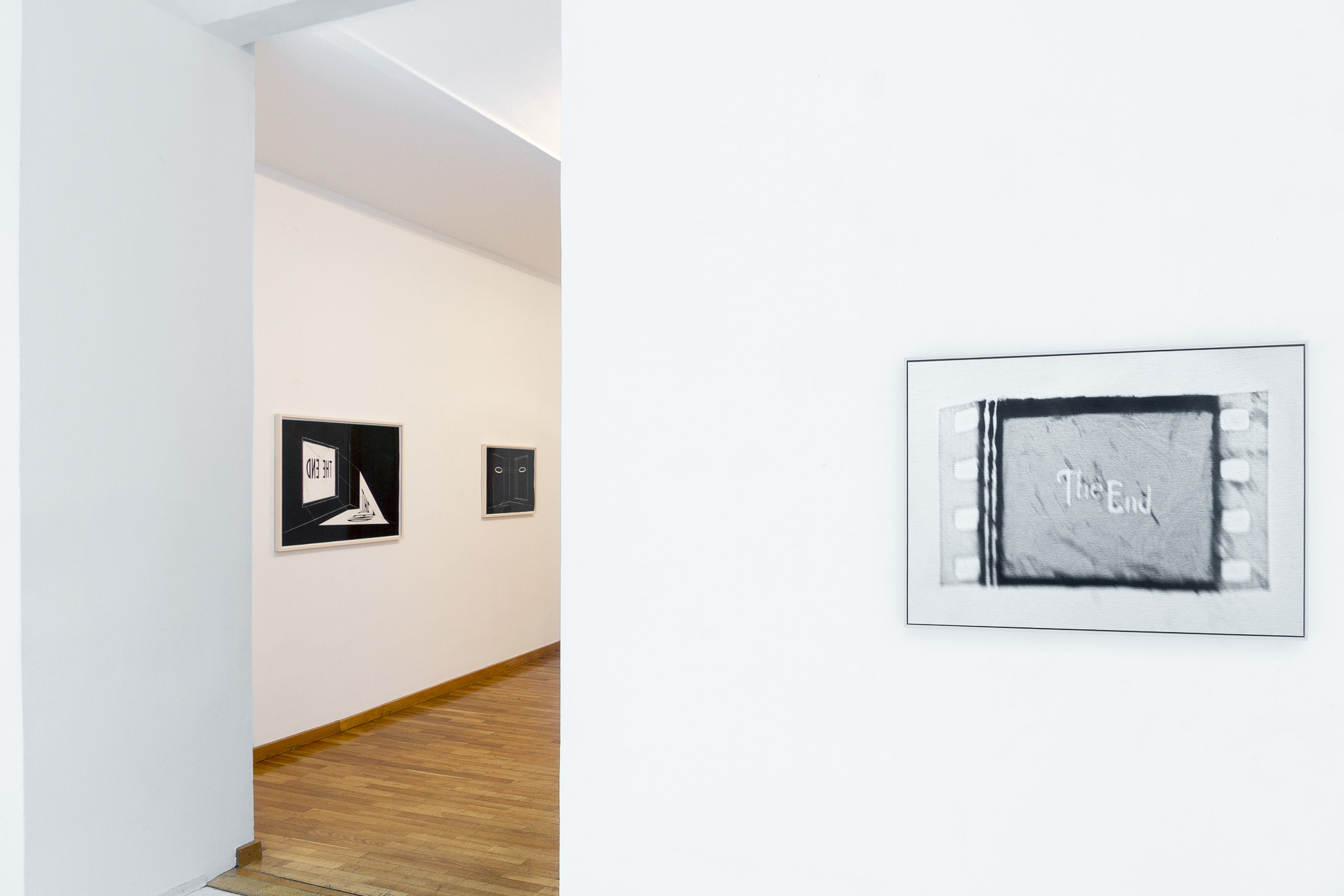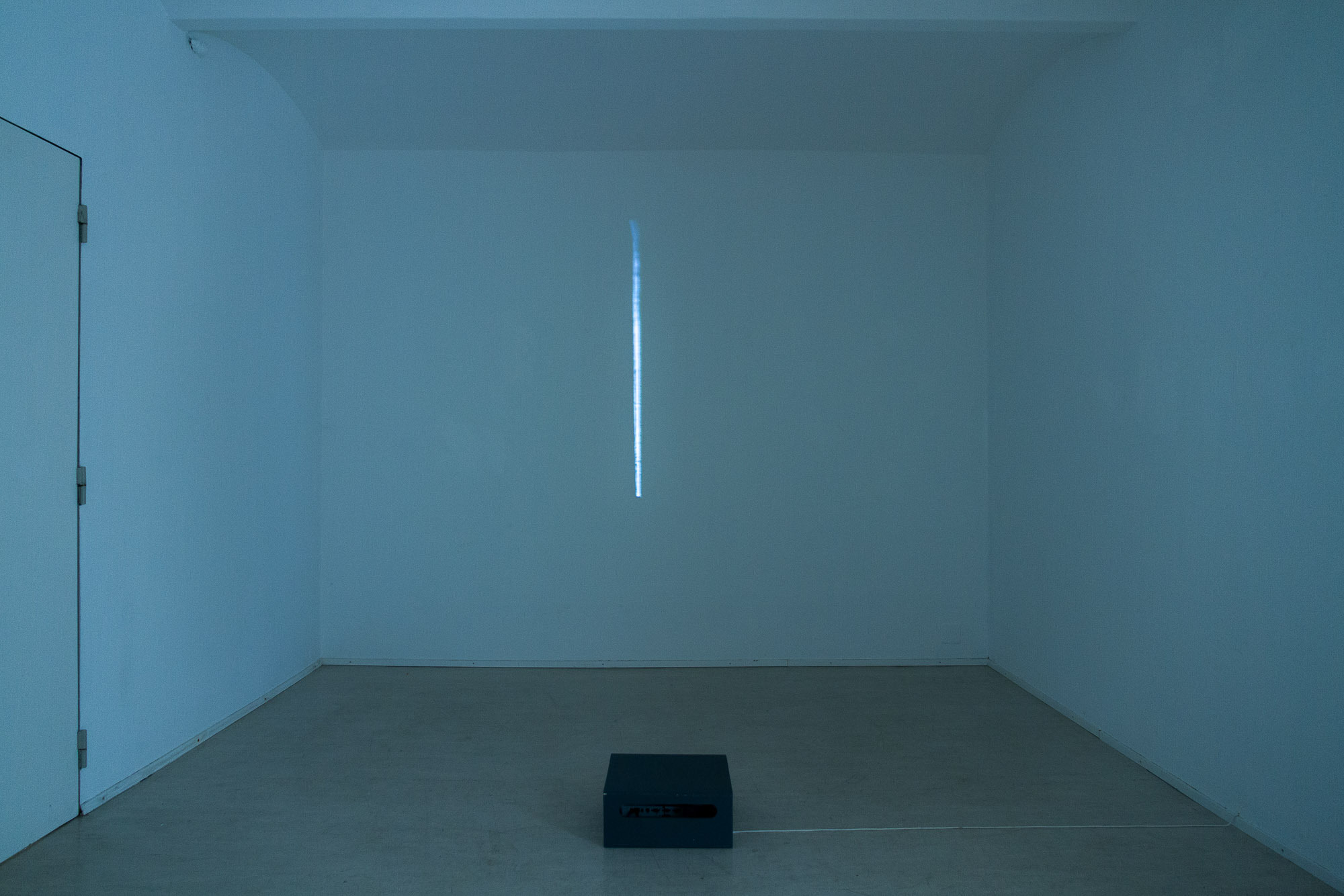—
Liddy Scheffknecht
sciography
Legend has it that without shadow no art history would exist, as the latter was seemingly born out of the former. In the first century after Christ, Pliny the Elder, narrates the beginning of painting as a touching love story: a potter in Corinth named Butades, discovers the painting through the markings made by his daughter. Cast by the light of a lamp, Butades' daughter traces in outline the shadow on a wall of her lover's face. The lover is soon to travel abroad but his image shall stay with her. Although the history of painting seemed to start with the shadow, for a long time the shadows were unwelcome existence; when objects cast shadows, painting them becomes complicated. The painter has to designate a light source, to determine an angle for the incoming light, define where the shadow falls, if it overshadows other objects in the image, or if even two shadows intersect. Next to technical difficulties, an ideological problem is becoming apparent, since shadows temporise and secularise art. A shadow not only reveals different times of day; it also speaks of transience and ephemerality of the depicted. Thus the viewer no longer seems to perceive the eternal, but only the instant, which elapses as soon as the shadow moves further. Such difficulties in painting, both of practical and ideological nature, seem to become obsolete with the medium of photography, where the claim of actuality rules and where the recording of a fleeting moment and the freezing of time create both – concerns and possibilities. Photography can captivate permanently – and within a fraction of a second – a certain state of light and shadow. However, there is one thing this medium cannot provide: to stage the continuous change of light. This may only be done through film that is able to depict the temporal course of movement.
Between the poles of light and shadow, movement and standstill, Liddy Scheffknecht (born 1980) has been questioning and exhausting the limits of film, photography, installation, and drawing in her artistic practice for about 15 years. In her first solo show at Georg Kargl Fine Arts – in 2011 her works presented at the Georg Kargl BOX – she explores the relationship of temporality and perception and likewise creates and brakes with illusions. She expands photographic standstills through video projections and creates a medial hybrid between the static and the moving image, between the medium of photography and film.
In La Journée a video of two human shadows is being accurately projected onto a large-format photography of the Hofarkaden in Munich. The changing form of the shadows seems to be influenced not only by changing daylight conditions inside and outside the arcades, but paradoxically also by the architectural elements that indeed exist tangibly locally, but cannot be in place in the photographic image. The result is an uncanny, seemingly surreal scenario that reminds of Giorgio de Chirico’s Pittura Metafisica. The unsettling irritation also results from the shadows being produced by the light of the projector and in their lack of a reference within the image. Sliding into the arcades seemingly out of nothing is the shadow of a photographer, who appears to take a picture of another person’s shadow turning up shortly afterwards. Both slowly drift from inside the arcades to the outside, to then disappear on the lower edge of the image. Even if in other video installations by Liddy Scheffknecht, the characters who seemingly throw the shadows are present in the photograph – such as the skiing couple in point – the shades nevertheless develop more or less independently from their primary object, they exceed the picture margin, modify and distort, and no longer allow the viewer to draw coherent visual conclusions.
The complex relationship between movement and standstill, between objects and their shadows is addressed in Liddy Scheffknecht’s photographic sequences and extrapolated into the absurd. In her photographic studies she takes recourse to the already known stylistic medium of the image series, where a sequel of images suggests temporal change and movement. Scheffknecht takes photographs of everyday objects and their seemingly appropriate shadows, whereby only one picture in the series shows a consistent illusion. However also through this picture the viewer enters Scheffknecht’s absurdly constructed imagery. In allusion to the well-known piece of bungling, where after the construction of a windowless town hall, citizens vainly try to transport sunlight into the inside of the building by the use of buckets, Scheffknecht shows in her photographic series spot a fallen over bucket resting at always the same place on the floor. It’s seemingly liquid content moves as light spot through the room and even on the photograph, where the illusion of the light spot and the corresponding object is the most congruent, one might wonder how these truly relate.
In the photographic series Ceci n’est pas une plante, a mental homage to René Magritte’s Ceci n’est pas une pipe, the artist turns the intellectual game on reality and illusion, and on the disjunction of signifier and signified insofar further, as she stages not the actual plant, but only its image – visibly fixed to the wall by the help of needles – together with the plant’s shadow that seems to take on a life of its own. Relevant for the artistic methodology of Liddy Scheffknecht are factors such as slowness, loss of control, and poetic illusion. The shadows are not being manipulated digitally, but are constructed in a tiresome and meticulous analogue process that lies beyond her control and her sphere of influence and is rather dependent on the position of the sun, season of year, and weather conditions. Scheffknecht’s perceptive studies render visible what lies outside the image frame. They appear to be snippets out of nature’s studio, and seem at the same time artificially manipulated, since shadow and time form the artistic materials of construction.
Sciography, or shadow painting, is taken further in the photographic single images of this same title. Sunlight pierces windowpanes covered with colour foil and casts a colourful abstract image onto a sheet of paper resting on the floor. A photograph fixates the transitory moment that arises as such only once a day, provided a certain sun exposure. The colour shades that break on the paper folds become apparent in such a manner that it is not readable if the folds exist in the original illusionistic image or in its photographic copy. Fuzzy clouds of colour emerge. Their appealing depths almost remind of the transcendental colour field paintings by Mark Rothko and their ephemeral impression unfolds more and more, the closer the onlooker steps to the images. The beholder’s extra-pictorial movement almost seems to activate an intra-pictorial motion, as if the vertical lines wave as colour mists out of the photograph, just to right away disappear again into it. The fleeting image develops in the viewer’s mind, for the duration of the contemplation, and one is tempted to make the image talk using words by the ancient Greek poet Pindar: „A shadow’s dream are humans.“
Text: Fiona Liewehr
Biography
born 1980 in Dornbirn/AT; lives and works in Vienna
Selected Solo Exhibitions
2025
Mapping Time, Atelier Haaskeusche, Glanegg
Living Room (Closing), ORF-Landesfunkhaus, Vorarlberg
2023
Broken Flowers, korridor, Vienna
2021
nine to five, Kunstraum Weikendorf, Weikendorf
2020
Dimensions, Sehsaal, Vienna
pictorial space, Schauraum Quartier21, Vienna
2018
points in time, Georg Kargl BOX, Vienna
mirage, Galerie Lisi Hämmerle, Bregenz
2016
dream argument, Kunsthalle Nexus, Saalfelden
Solar days, Remise Bludenz, Bludenz
sciography, Georg Kargl Fine Arts, Vienna
2015
shift, Galerie der Stadt Wels, Wels
2013
spot, Sotheby’s Artist Quarterly, Vienna
2012
eleven minutes twenty seconds, Kunsthaus Graz, Graz
sence, Ex-Garage, Maribor
2011
LIDDY SCHEFFKNECHT, Georg Kargl BOX, Vienna
Bubblegums, The Outside Gallery Window, Milan
2008
Take Aways, Galerie Wilma Lock, St. Gallen
whiteout, Galerie Jeune Création, Paris
2006
scaffoldings, The Outside Gallery Window, Milan
Selected Group Exhibitions
2026
Not Nice Girls! - The female view in photographies from the SpallArt Collection, Galerie im Alten Rathaus, Prien am Chiemsee
2025
In the Lights of Shadows, Forum für Fotografie, Cologne
Learning Systems, Vienna Art Week, Vienna
FASCINATION PAPER - Rembrandt to Kiefer, Albertina, Vienna
2022
The Fest, MAK, Vienna
2021
Heimspiel, Kunstraum Dornbirn, Dornbirn
25 Jahre Kunstforum Montafon, Kunstforum Montafon, Vorarlberg
Sammlung König-Lebschik,KUB Sammlungsschaufenster, Bregenz
Auf eigene Gefahr, Vorarlberg Museum, Bregenz
Solar Habitat, Lindabrunn
Unerkannnt, Bekannt, Kunstmuseum Appenzell, Appenzell
2021
Heimspiel, Kunstraum Dornbirn, Dornbirn
25 Jahre Kunstforum Montafon, Kunstforum Montafon, Vorarlberg
Auf eigene Gefahr, Vorarlberg Museum, Bregenz
Unerkannnt, Bekannt, Kunstmuseum Appenzell, Appenzell
2020
Would You Be Available…, Georg Kargl Permanent, Vienna
Borderland, Fotogalerie Wien, Vienna
Attempt at Rapprochement, Georg Kargl Fine Arts, Vienna
fake & fragment, Sehsaal, Vienna
Now. Collected #9/#10, Bank Austria Kunstforum, Vienna
minus 20 degrees, Festival for Art and Architecture, Flachau
2018
Plinque Projéction II, Cité Internationale des Arts Paris, Paris
Heimspiel 2018, Kunstmuseum Appenzell, Appenzell
A Recollection of Resonances, bb15’s 10-Year Anniversary Exhibition, bb15 - Raum für Gegenwartskunst, Linz
CONCENTRATION - a tribute, Gesellschaft für projektive Ästhetik, Georg Kargl, Vienna
Reduction, Gesellschaft für Projektive Ästhetik, Georg Kargl, Vienna
2017
Plex Noir, Atelier Van Lieshout, Atisuffix, Manfred Erjautz, Werner Reiterer, Liddy Scheffknecht, Johannes Vogl, Kunst im öffentlichen Raum, Graz
2016
dream argument, Kunsthalle Nexus, curated by Petra Noll
Hybrid (...) Scapes, Nida Art Colony, Nida (Lithuania)
FILTER, Kunstforum Montafon, Schruns, curated by Verena Kaspar-Eisert
2015
Transparency, Georg Kargl Fine Arts, Vienna, curated by Fiona Liewehr
Landscape: Transformations of an Idea – Art of the 1800 to the Present day from the Collection of the Neue Galerie Graz, Neue Galerie Graz, curated by Gudrun Danzer and Günther Holler-Schuster
Random thoughts of a daily light, das weisse haus, Vienna, curated by Alexandra Grausam und Markus Taxacher
Schneesalon, Georg Kargl BOX, Vienna
(O)budowa, Liddy Scheffknecht, Jan Mioduszewski, Austrian Cultural Forum Warsaw, Warsaw, curated by Jacek Malinowski
2014
Blow-Up, Albertina, Vienna, curated by Walter Moser
côte intérieur, Kunstpavillon, Innsbruck, curated by Ingeborg Erhart und Bernd Oppl
Inattentional Blindness, Galerie Zilberman, Istanbul, curated by Isin Önol
2013
Phantoms & Ghosts, das weisse haus, Wien, curated by Karin Fisslthaler und Bernd Oppl
The Intransigent Ticket - The Artist as a Filter, CSULA Fine Arts Gallery, Los Angeles, curated by Karin Mayr & Martin Sturm
PLI SELON PLI, Galerie 22,48m², Paris, curated by Yvonne Rüscher
ELASTIC VIDEO, Kunstraum Niederösterreich, Vienna, curated by PLINQUE
2012
/TILT/, Liddy Scheffknecht, Armin B. Wagner, Zentralkunstgarage, Lustenau
Parcours, Claudia Larcher/ Liddy Scheffknecht, Galerie Stephanie Hollenstein Lustenau, curated by Winfried Nussbaummüller
4. Internationale Sinop Biennale, curated by Isin Önol, Sinop, Turkey, curated by Isin Önol
Genius loci, Kulturpolis, Klaipéda, Lithuania, curated by Yulia Startseva and Vytautas Michelkevicius
The Digital Uncanny, Edith – Ruß – Haus for Media Art, Oldenburg, curated by Brigitte Felderer
2011
This is Happening II, Georg Kargl Fine Arts, Vienna, curated by Fiona Liewehr
Donetsk goes Contemporary, Art Point Donetsk, Ukraine, curated by Andrei Loginov and Steve Schepens
Space Odyssey, März / Linz, curated by Bernd Oppl
Meet everyone at once, start an artist-run-space, Ogms, Sofia
Kaleidoskop, In der Kubatur des Kabinetts - der kunstsalon im fluc, Fluc, Vienna
Elastic Video, Tokyo Wonder Site Hongo, Tokyo, curated by PLINQUE
2010
HAPPY HOUR, In der Kubatur des Kabinetts - der kunstsalon im fluc, Fluc, Vienna
Qui vive, 2nd Moscow International Biennale for Young Art, Artplay Design Center, Moscow
Mathias Garnitschnig, Claudia Larcher, Liddy Scheffknecht, c.art, Dornbirn, curated by Gerold Tagwerker
Austria la vista, baby, The Art Foundation, Athens
Petit Plinque, Transforming Freedom, Museumquartier, Vienna
Fine Line, Georg Kargl Fine Arts, Vienna, curated by Fiona Liewehr
Bernd Oppl, Liddy Scheffknecht, bb 15 / Linz
WIR WOHNEN, Kunstraum Niederösterreich, Vienna
2009
Plinque Projéction, Cité Internationale des Arts, Paris, curated by PLINQUE
Biennale of Young Artists of Europe and the Mediterranean, Nacionalna Galerija - Mala Stanica, Skopje
Plinque Meringue, Contemporary, Vienna
UnOrtnung V, Ankerbrotfabrik, Vienna
2008
Jeune Création 2008, Parc de la Villette, Espace Charlie Parker, Paris
GAMES. Kunst und Politik der Spiele, Kunsthalle Vienna project space, Vienna
Inquiry
Please leave your message below.
